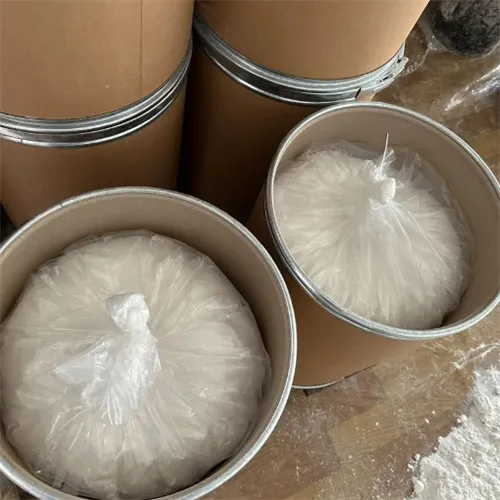Warning: Undefined array key "title" in /home/www/wwwroot/HTML/www.exportstart.com/wp-content/themes/1198/header.php on line 6
Warning: Undefined array key "file" in /home/www/wwwroot/HTML/www.exportstart.com/wp-content/themes/1198/header.php on line 7
Warning: Undefined array key "title" in /home/www/wwwroot/HTML/www.exportstart.com/wp-content/themes/1198/header.php on line 7
Warning: Undefined array key "title" in /home/www/wwwroot/HTML/www.exportstart.com/wp-content/themes/1198/header.php on line 7
- Afrikaans
- Albanian
- Amharic
- Arabic
- Armenian
- Azerbaijani
- Basque
- Belarusian
- Bengali
- Bosnian
- Bulgarian
- Catalan
- Cebuano
- China
- China (Taiwan)
- Corsican
- Croatian
- Czech
- Danish
- Dutch
- English
- Esperanto
- Estonian
- Finnish
- French
- Frisian
- Galician
- Georgian
- German
- Greek
- Gujarati
- Haitian Creole
- hausa
- hawaiian
- Hebrew
- Hindi
- Miao
- Hungarian
- Icelandic
- igbo
- Indonesian
- irish
- Italian
- Japanese
- Javanese
- Kannada
- kazakh
- Khmer
- Rwandese
- Korean
- Kurdish
- Kyrgyz
- Lao
- Latin
- Latvian
- Lithuanian
- Luxembourgish
- Macedonian
- Malgashi
- Malay
- Malayalam
- Maltese
- Maori
- Marathi
- Mongolian
- Myanmar
- Nepali
- Norwegian
- Norwegian
- Occitan
- Pashto
- Persian
- Polish
- Portuguese
- Punjabi
- Romanian
- Russian
- Samoan
- Scottish Gaelic
- Serbian
- Sesotho
- Shona
- Sindhi
- Sinhala
- Slovak
- Slovenian
- Somali
- Spanish
- Sundanese
- Swahili
- Swedish
- Tagalog
- Tajik
- Tamil
- Tatar
- Telugu
- Thai
- Turkish
- Turkmen
- Ukrainian
- Urdu
- Uighur
- Uzbek
- Vietnamese
- Welsh
- Bantu
- Yiddish
- Yoruba
- Zulu
نوامبر . 09, 2024 03:44 Back to list
Understanding the Uses and Safety of Propylene Glycol as a Food Additive
Understanding Propylene Glycol as a Food Additive
Propylene glycol, an organic compound with the formula C3H8O2, is a colorless and odorless liquid that has gained significant attention as a food additive in the food and beverage industry. Commonly recognized by its E number, E1520, propylene glycol is used for various purposes in food products, ranging from a humectant to a solvent and flavoring agent. In this article, we delve into the characteristics, applications, safety, and regulations surrounding propylene glycol as a food additive.
Properties and Characteristics
Propylene glycol is a synthetic organic compound that is hygroscopic, meaning it has the ability to absorb moisture from the air. This property makes it particularly useful as a humectant in food products, helping to retain moisture and ensure a desired texture and freshness. It is miscible with water, acetone, and chloroform, making it an effective solvent for food flavors, colors, and other additives. Due to its low toxicity and GRAS (Generally Recognized As Safe) status, propylene glycol has become a staple in various food applications.
Applications in Food
1. Humectant In baked goods, propylene glycol helps maintain moisture levels, preventing products like cakes and bread from drying out. It is especially beneficial in prolonging shelf life, thus enhancing overall product quality.
2. Solvent As a solvent, propylene glycol is used to dissolve flavors and colors that are subsequently added to food products. This property is particularly important in creating uniform flavors in beverages and confections.
3. Emulsifier In sauces and dressings, propylene glycol aids in mixing oil and water-based ingredients, ensuring a stable and consistent mixture.
4. Preservative Its antimicrobial properties contribute to food preservation by inhibiting the growth of certain microorganisms, thus further safeguarding food quality.
propylene glycol food additive

5. Flavoring Agent Many food products benefit from propylene glycol’s ability to enhance flavor, making it a popular choice in the formulation of candies, baked goods, and beverages.
Safety and Regulatory Status
The safety of propylene glycol has been evaluated by several food safety authorities around the world, including the U.S. Food and Drug Administration (FDA) and the European Food Safety Authority (EFSA). Both agencies have classified propylene glycol as safe when used in accordance with existing regulations and guidelines.
The acceptable daily intake (ADI) set by the World Health Organization (WHO) is established at up to 25 mg per kg body weight, which ensures that common dietary usages remain well within safety limits. However, individuals with certain allergies or sensitivities may experience adverse reactions, albeit rarely. Thus, it is crucial for manufacturers to label products that contain propylene glycol, allowing informed choices for consumers.
Public Perception and Controversies
Despite its safety approval, propylene glycol has faced scrutiny and misconceptions among health-conscious consumers. Many associate it with more harmful substances like ethylene glycol, which is toxic. This misunderstanding has led to a growing demand for “natural” alternatives in food products. Manufacturers are now challenged to communicate the benefits and safety of propylene glycol effectively.
Conclusion
Propylene glycol plays a vital role as a food additive, serving multiple purposes that enhance the quality, flavor, and shelf life of food products. Its low toxicity and regulatory approval underline its safety for consumption in moderate amounts. As consumers continue to demand transparency and natural ingredients, the food industry must navigate the balance between scientific advancements and public perception. Ultimately, understanding propylene glycol is crucial for appreciating its contributions to modern food processing and the ongoing discourse surrounding food additives.
Latest news
-
Certifications for Vegetarian and Xanthan Gum Vegetarian
NewsJun.17,2025
-
Sustainability Trends Reshaping the SLES N70 Market
NewsJun.17,2025
-
Propylene Glycol Use in Vaccines: Balancing Function and Perception
NewsJun.17,2025
-
Petroleum Jelly in Skincare: Balancing Benefits and Backlash
NewsJun.17,2025
-
Energy Price Volatility and Ripple Effect on Caprolactam Markets
NewsJun.17,2025
-
Spectroscopic Techniques for Adipic Acid Molecular Weight
NewsJun.17,2025

